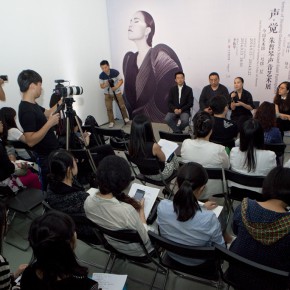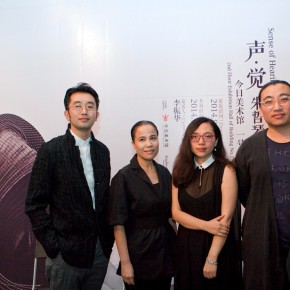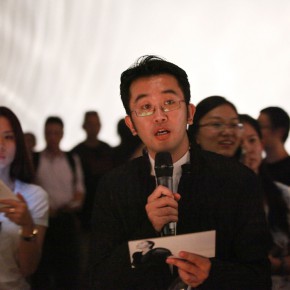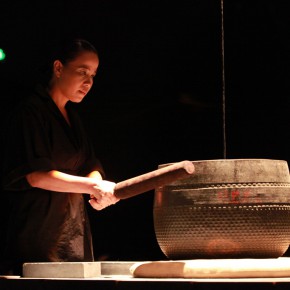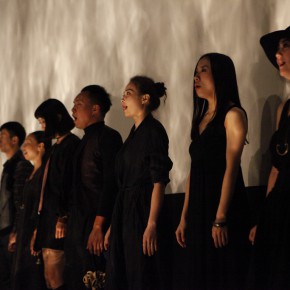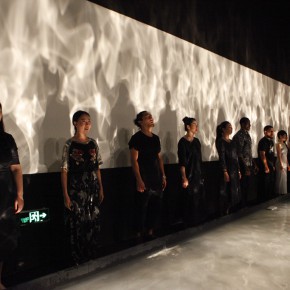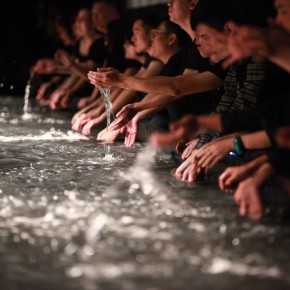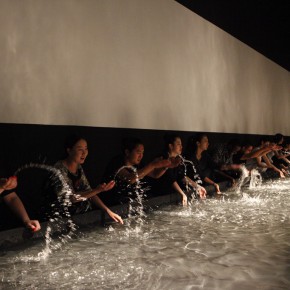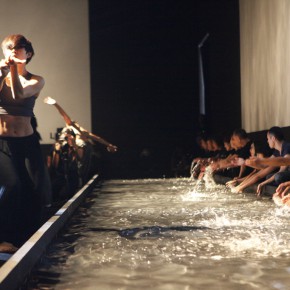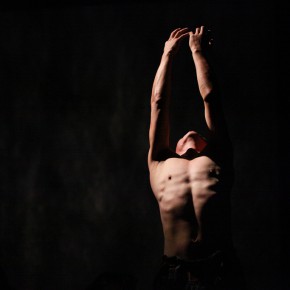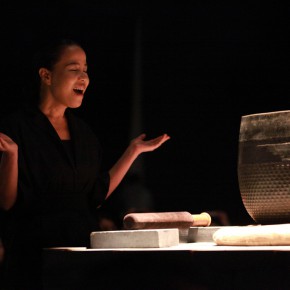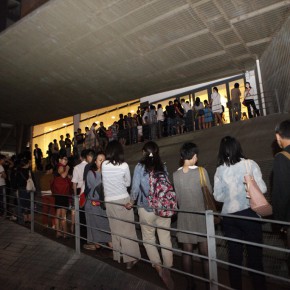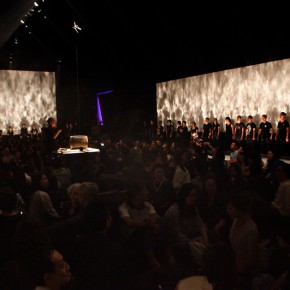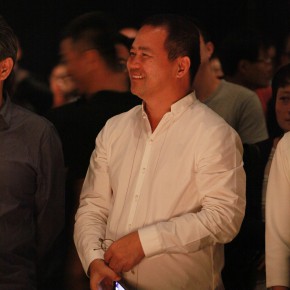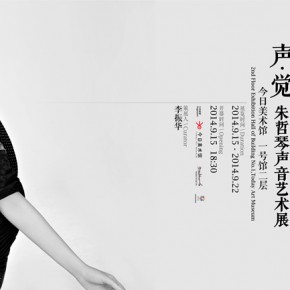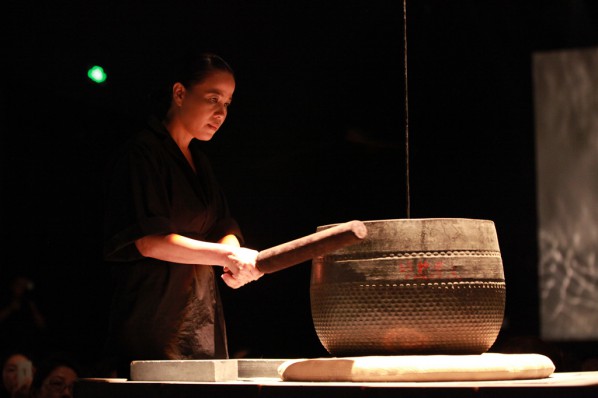
On September 15, 2014, “Sense of Hearing-DaDawa's Sound Field Participative Project” was inaugurated at the Today Art Museum. As an internationally known artist and musician, Dadawa creates a high standard for her own music and everything around her. In the exhibition opening ceremony, Dadawa led more than 70 volunteers to “make a sound” together, using modern techniques of sound, light, electricity as well as large multimedia installations, offering more respect to the resonance of the sounds and the natural blending process. So the honored guests, media and audience presented at the show were able to enjoy two wonderful audio-visual feasts.
At the press conference, Dadawa said: She had the biggest harvest of the exhibition which held her escape from the frame-type stage. Through the four or five experiments that were held together with her team, she could understand the relationship between sound and space from a new perspective, inspired to create the “architecture of sound” through sound.
As Dadawa once said, “Contemporary art impacts on us with its broad spirit, rather than some people or some school, and this spirit is reflected in the show invited by Today Art Museum, which is infinite. In this age, actually I don’t think it’s a boundary of medium used in my art creation, and it isn’t a simple trans-boundary issue that interacts with sound and vision in the environment of the art museum, moreover the art accumulation and understanding over the years is tested in a new way.”
“Dadawa is a musician and an artist. In the beginning of the 1990s she became the first singer that published was both in China and abroad. She started her international musical adventure around the year 2000. From the indirect utilization of culture to the collection and preservation of culture, she concentrated on the transformation and elevation of cultures and accomplished her transition from performer to cultural scholar.
Sound / Sense is a live process from vision to hearing. Sounds can provoke shared feelings in people from different cultural backgrounds of any age, environment or context. What art generates in many cases is a moment that can be intervened and participated in. What we need to accomplish is to transcend and melt into a space and an experience that may come into being.
The work of Dadawa goes beyond the concept of cross-over. Her activities involve the media, the public and communities tremendously. Art is not simply perceptions of seeing and hearing to her, it is an attitude from a person of actions. Dadawa may be able to provide a space for the viewers and herself to meet, a space that points to the future and archeological experiences, an experience that belongs to the level of voices of sounds, a wonder that comes from every day but exceeds the everyday mediocrity.”
- Li Zhenhua
“Today Art Museum, as a pioneer of China's private art museums has always devoted itself to the exploration of the nature and boundaries of art. As visual art and behavioral art are generally accepted and acknowledged, the question would be whether sound is able to exist as an independent form of art.
The concept of art as a means to express the inner world of the artist through visual art has existed for a long time. But as art develops and the visual art re-discovers its own definition, the spirit expresses its concept through sensible forms. Music works in the same way. As the spirit detaches from outer objects of sensation, it is then processed by art practice in search of its own nature. Thus sound escapes from music as pure energy. Sound Art appeared as an independent art genre in the late 20th century. Since then it has been devoted to respect the nature of sound and actively listens to it. Different to painting which is based on visual expressions, sound art expresses its concept through variations of rhythm and sources. Its unique nature of ultimate freedom deprived of any desire binds it closer to the mind of the subject.
In this exhibition, Dadawa was invited to present us an abstract sound art exhibition. She turns the whole exhibition hall into a huge architecture of sound, leading everyone to feel the source of sound or “Sense of Hearing”. The final result is a pure conceptual artwork. Finally, I would like to invite all of you to come to our museum and locate yourselves in the architecture of sound, where you could explore your sensation of hearing, to use your mind, to use your ears to hear and feel the exhibition.”
- Today Art Museum Director Alex Gao Peng
About the Artist
Dadawa, artist and independent musician, has spent over a decade travelling the world and setting milestones in both Chinese and World Music with her characteristic musical expression and philosophical approach. Yellow Children and Sister Drum, two of her most influential albums have become iconic memories of an age.
Dadawa has devoted her recent years to the protection and inheritance of traditional Chinese culture. She led the cultural heritage project "Show the World" to Yunnan, Guizhou, Qinghai, Inner Mongolia and Tibet. There she brought together designers, artists, young musicians and fashion celebrities to create a series of modern music and contemporary folk art.
The name Dadawa is closely associated with the direction of the zeitgeist. As a person of action, she is at the forefront, both in the protection and the innovation of cultures.
"Sense of Hearing" is the first experiment in Dadawa's sound art. Through tonal architecture she connects with the audience and lets us perceive the intangible power of sound.
About the Curator
Li Zhenhua has been active in the artistic field since 1996, his practice mainly concerns curating, art creation and project management. Since 2010 he has been the nominator for the Summer Academy at the Zentrum Paul Klee Bern (Switzerland), as well as for The Prix Pictet (Switzerland). He is a member of the international advisory board for the exhibition "Digital Revolution" to be held at the Barbican Centre in the UK in 2014.
Li Zhenhua has edited several artists' publications, including "Yan Lei: What I Like to Do" (Documenta, 2012), "Hu Jieming: One Hundred Years in One Minute" (2010), "Feng Mengbo: Journey to the West" (2010), and "Yang Fudong: Dawn Mist, Separation Faith" (2009). A collection of his art reviews has been published under the title "Text" in 2013.
Courtesy of the artist, Photo by Today Art Museum.


